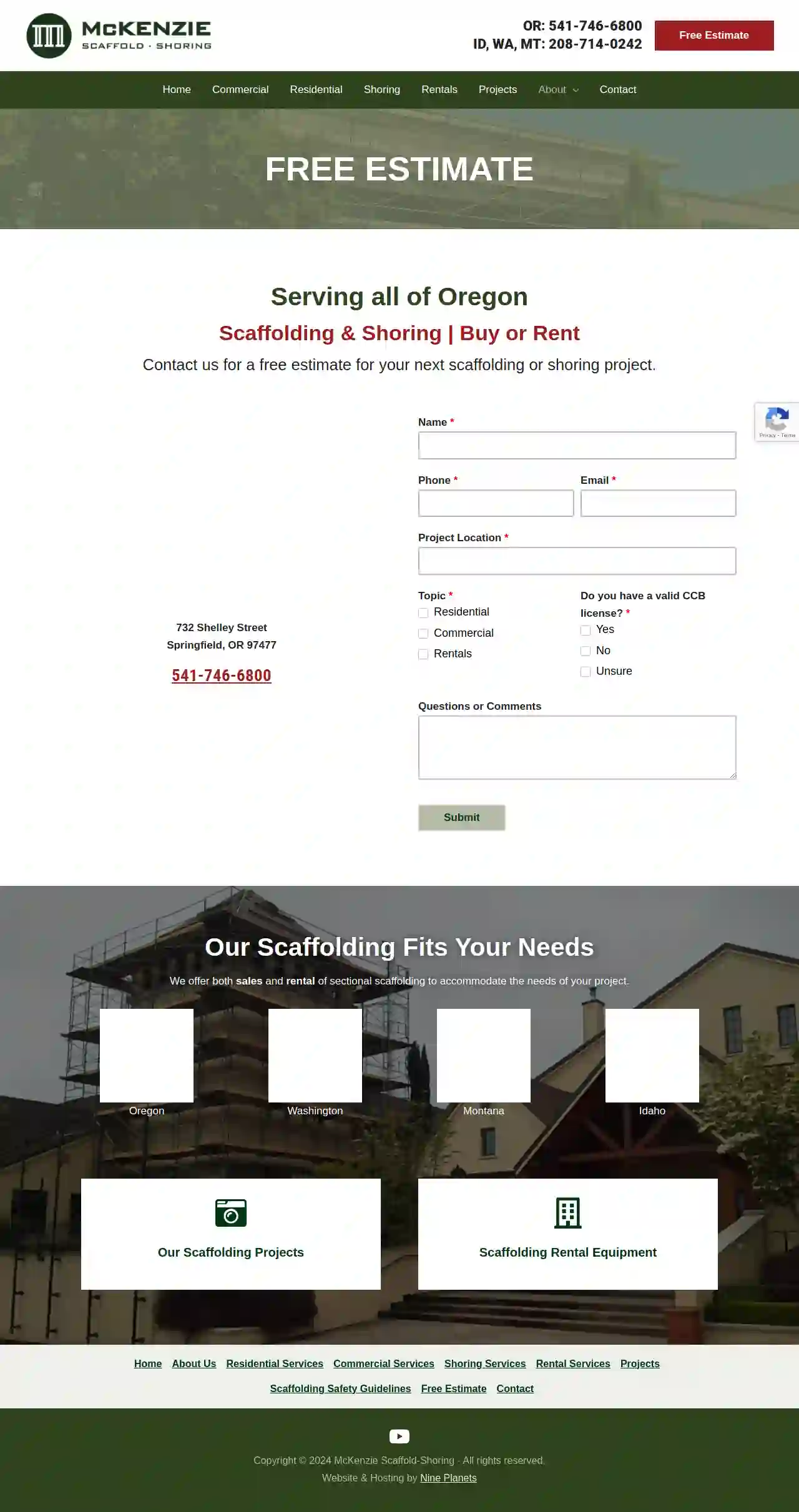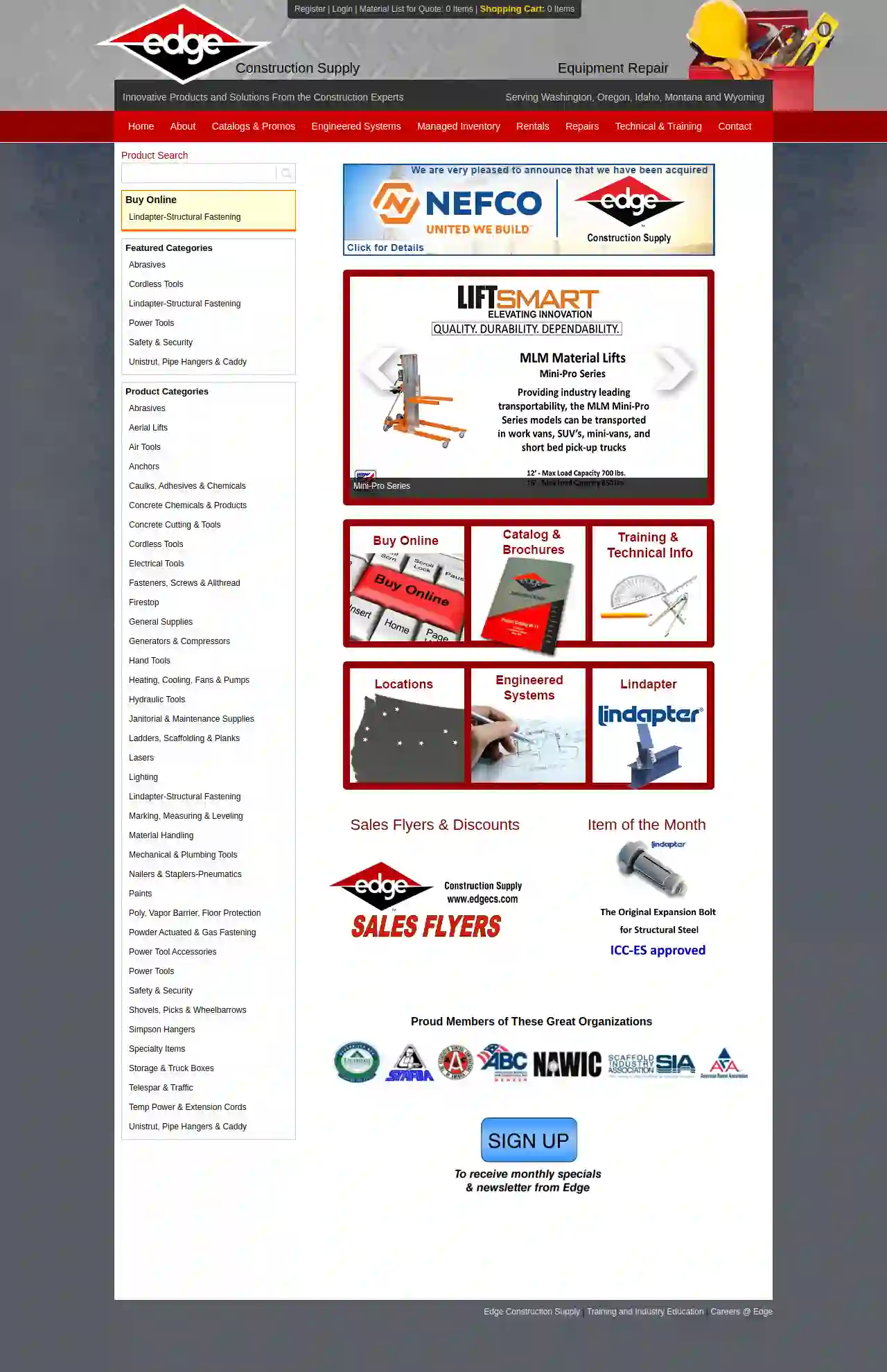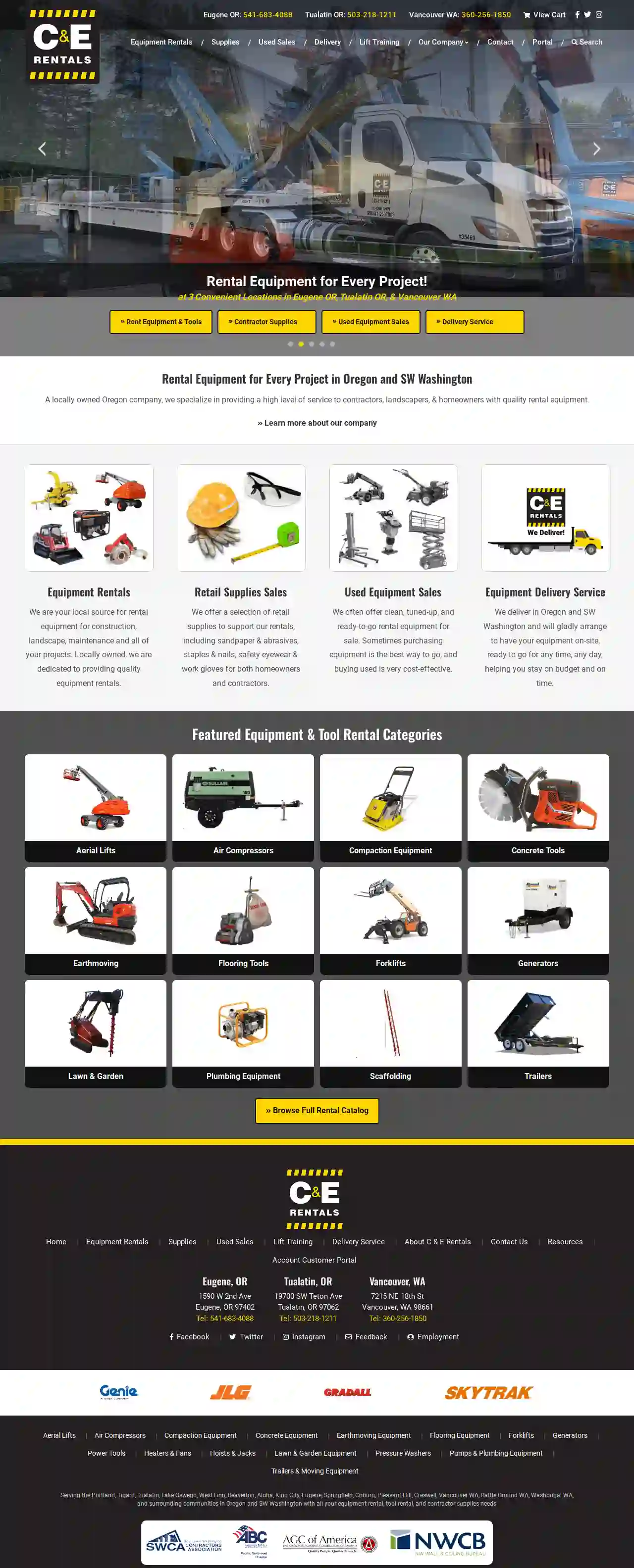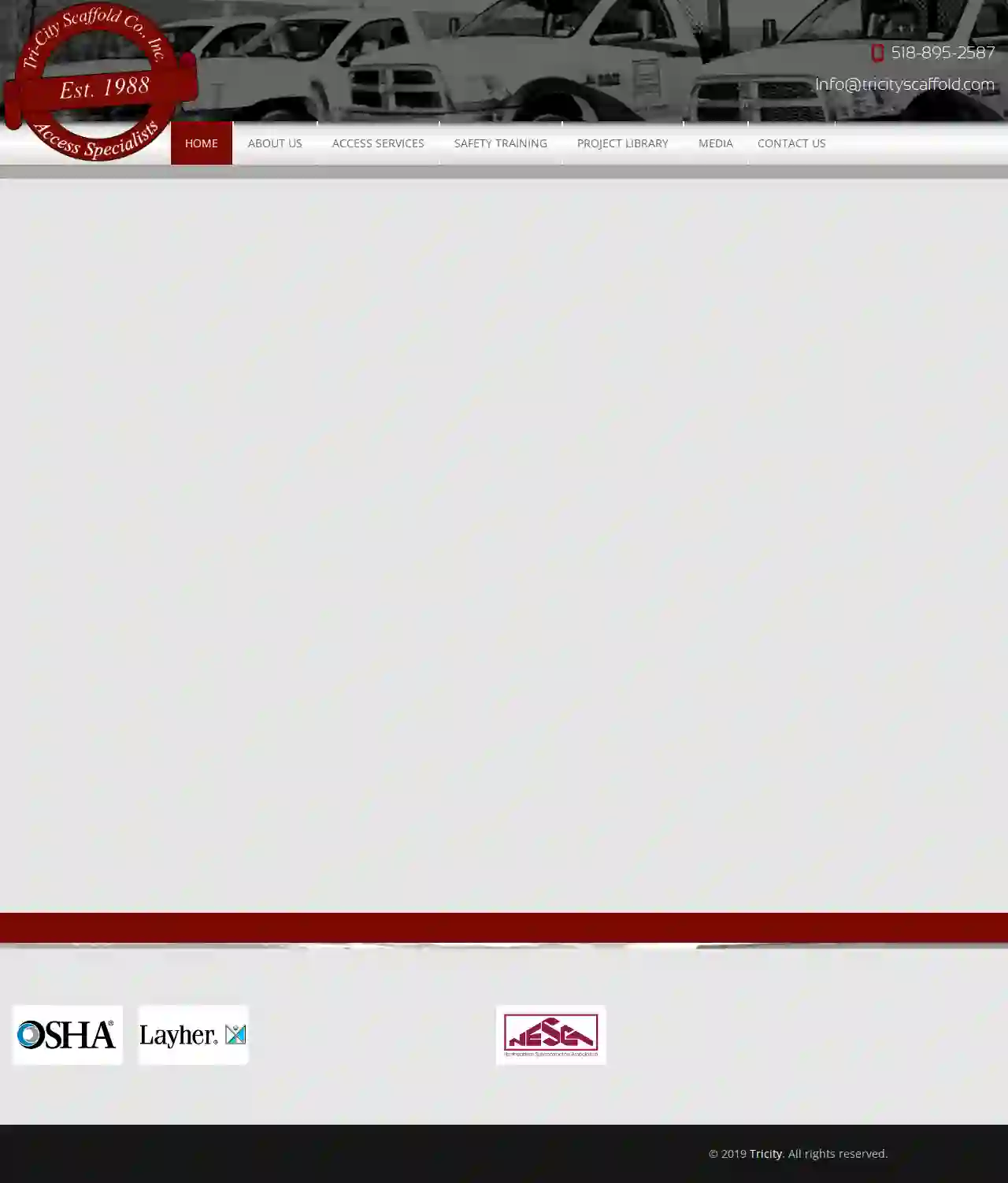Scaffolding Companies Sandy
Find top Construction Scaffolding in Sandy
Receive multiple Scaffolding Solutions quotes for your project today! Compare profiles, reviews, accreditations, portfolio, etc... and choose the best offer.

McKenzie Scaffold-Shoring
3.97 reviewsSpringfield, OR, 732 Shelley Street, 97477, USMcKenzie Scaffold • Shoring is a premier provider of scaffolding and shoring services, serving all of Oregon, Idaho, along with Eastern Washington and Western Montana. The company offers both sales and rental of sectional scaffolding to accommodate the needs of your project, ensuring outstanding safety performance, on-time and on-budget project management.
- Services
- Why Us?
- Accreditations
- Gallery
Get Quote
Edge Construction Supply
4.830 reviews123 Main St, Spokane, WA, 99201, USEdge Construction Supply has been serving the commercial construction and industrial markets for more than 70 years. We are headquartered in Spokane with eight additional branches including Seattle, Yakima, Kennewick, Boise, Eugene, Medford, Billings, and Idaho Falls. We proudly service our customers in Washington, Oregon, Idaho, and Montana. Our company has been built upon relationships with our customers. We provide expert service for your project and we aim to serve.
- Services
- Why Us?
- Accreditations
- Our Team
- Testimonials
- Gallery
Get Quote
C & E Rentals
4.4144 reviews1590 W 2nd Ave, Eugene, 97402, USRental Equipment for Every Project in Oregon and SW Washington A locally owned Oregon company, we specialize in providing a high level of service to contractors, landscapers, & homeowners with quality rental equipment. Learn more about our company Equipment Rentals We are your local source for rental equipment for construction, landscape, maintenance and all of your projects. Locally owned, we are dedicated to providing quality equipment rentals. Retail Supplies Sales We offer a selection of retail supplies to support our rentals, including sandpaper & abrasives, staples & nails, safety eyewear & work gloves for both homeowners and contractors. Used Equipment Sales We often offer clean, tuned-up, and ready-to-go rental equipment for sale. Sometimes purchasing equipment is the best way to go, and buying used is very cost-effective. Equipment Delivery Service We deliver in Oregon and SW Washington and will gladly arrange to have your equipment on-site, ready to go for any time, any day, helping you stay on budget and on time.
- Services
- Why Us?
- Gallery
Get Quote
BrandSafway Services Albany
47 reviewsAlbany, US- Services
- Why Us?
Get Quote
Performance Equipment Rental
Newburgh, NY, 5301 Route 9W, 12550, USPerformance Equipment Rental LLC is a powerful architecture and construction theme that offers a wide range of equipment for rent. With branches in New York and New Hampshire, they provide top-notch services to clients across the region. Their mission is to provide high-quality equipment and exceptional customer service.
- Services
- Why Us?
- Accreditations
- Our Team
- Testimonials
- Gallery
Get Quote
Tri-City Scaffold Co., Inc.
Delanson, NY, 282 Pannis Road, 12053, USTri-City Scaffold Co., Inc. is a family owned premier scaffolding company with a leading reputation for providing high quality and safe access solutions across the capital region and Upstate New York. Established in 1988, Tri-City Scaffold has consistently delivered expertise in access solutions across a wide range of industries meeting the needs of unique and complex projects spanning: institutional, industrial, civic, commercial, private, and government sectors. Experience, competence, and technical proficiency combined with an outstanding best practice compliance and safety record, ensures that our team of professional scaffolders persistently deliver superior results with maximum safety management. Tri-City’s unrivaled professional team of scaffold builders are the backbone of the company, with an impressive number employed at Tri-City for 14 years or more, as well as a new generation of builders that continue to cement the leading reputation of Tri-City Scaffold with every project.
- Services
- Why Us?
- Accreditations
- Our Team
- Testimonials
- Gallery
Get Quote- Ka
Kabelin Ace Hardware - South Bend North
4.4339 reviewsBend, US- Services
- Why Us?
Get Quote - La
Law's Tru Stone LLC
4.228 reviewsBend, US- Services
- Why Us?
Get Quote - Gr
Grainger Industrial Supply
3.417 reviewsBend, US- Services
- Why Us?
Get Quote - Gl
Glass Doctor of South Bend, IN
4.6147 reviewsBend, US- Services
- Why Us?
Get Quote
Over 2,353+ Scaffolding Contractors in our network
Our scaffolding contractors operate in Sandy and surroundings!
ScaffoldingHQ has curated and vetted the Best Scaffolding Businesses near Sandy. Find a trustworthy contractor today.
Frequently Asked Questions About Scaffolding Companies
- Tube and Clamp Scaffolding: A traditional and versatile system using individual tubes and clamps. It's highly adaptable but requires more time to erect.
- System Scaffolding: Pre-engineered systems with modular components that fit together quickly. They offer speed and efficiency, especially for larger projects.
- Suspended Scaffolding: Hung from a roof or overhead structure, ideal for high-rise buildings or areas with limited ground access.
- Mobile Scaffolding: Mounted on wheels, allowing easy movement around a worksite. Suitable for tasks like painting or plastering.
- Specialized Scaffolding: Cantilever scaffolding, rolling towers, and other specialized systems cater to specific needs.
- Experience: 'How long have you been in business, and what experience do you have with projects like mine?'
- Licensing and Insurance: 'Are you fully licensed and insured, and can I see proof of coverage?'
- Safety Record: 'What are your safety procedures, and how do you ensure worker safety on the job site?'
- References: 'Can you provide references from previous clients?'
- Quotes and Costs: 'Can you provide a detailed quote that outlines all costs, including materials, labor, and any additional services?'
- Project Timeline: 'What is the estimated timeframe for scaffolding erection and dismantling?'
- Communication: 'How will you communicate with me throughout the project?'
- Falls from Height: The most significant risk, often due to lack of guardrails, improper use of safety harnesses, or unstable platforms.
- Falling Objects: Tools, materials, or debris falling from the scaffolding can injure workers or people below.
- Scaffold Collapse: Improper assembly, overloading, or inadequate foundation support can lead to a catastrophic collapse.
- Electrocution: Contact with overhead power lines is a serious hazard when working near electrical infrastructure.
- Slips, Trips, and Falls: Wet or cluttered platforms, uneven surfaces, and loose debris can cause falls.
- A temporary structure with a larger platform for workers and materials.
- Offers greater stability and working space.
- Suitable for tasks requiring movement and multiple workers.
- Used for higher elevations and more complex projects.
- Used for reaching specific points at height for short durations.
- Less stable than scaffolding, requiring more caution and balance.
- Not suitable for tasks involving heavy materials or extended work periods.
What are the different types of scaffolding?
What questions should I ask a scaffolding company before hiring them?
What are some common scaffolding safety hazards?
What is the difference between a scaffold and a ladder?
Scaffolding:
What are the different types of scaffolding?
- Tube and Clamp Scaffolding: A traditional and versatile system using individual tubes and clamps. It's highly adaptable but requires more time to erect.
- System Scaffolding: Pre-engineered systems with modular components that fit together quickly. They offer speed and efficiency, especially for larger projects.
- Suspended Scaffolding: Hung from a roof or overhead structure, ideal for high-rise buildings or areas with limited ground access.
- Mobile Scaffolding: Mounted on wheels, allowing easy movement around a worksite. Suitable for tasks like painting or plastering.
- Specialized Scaffolding: Cantilever scaffolding, rolling towers, and other specialized systems cater to specific needs.
What questions should I ask a scaffolding company before hiring them?
- Experience: 'How long have you been in business, and what experience do you have with projects like mine?'
- Licensing and Insurance: 'Are you fully licensed and insured, and can I see proof of coverage?'
- Safety Record: 'What are your safety procedures, and how do you ensure worker safety on the job site?'
- References: 'Can you provide references from previous clients?'
- Quotes and Costs: 'Can you provide a detailed quote that outlines all costs, including materials, labor, and any additional services?'
- Project Timeline: 'What is the estimated timeframe for scaffolding erection and dismantling?'
- Communication: 'How will you communicate with me throughout the project?'
What are some common scaffolding safety hazards?
- Falls from Height: The most significant risk, often due to lack of guardrails, improper use of safety harnesses, or unstable platforms.
- Falling Objects: Tools, materials, or debris falling from the scaffolding can injure workers or people below.
- Scaffold Collapse: Improper assembly, overloading, or inadequate foundation support can lead to a catastrophic collapse.
- Electrocution: Contact with overhead power lines is a serious hazard when working near electrical infrastructure.
- Slips, Trips, and Falls: Wet or cluttered platforms, uneven surfaces, and loose debris can cause falls.
What is the difference between a scaffold and a ladder?
Scaffolding:
- A temporary structure with a larger platform for workers and materials.
- Offers greater stability and working space.
- Suitable for tasks requiring movement and multiple workers.
- Used for higher elevations and more complex projects.
- Used for reaching specific points at height for short durations.
- Less stable than scaffolding, requiring more caution and balance.
- Not suitable for tasks involving heavy materials or extended work periods.